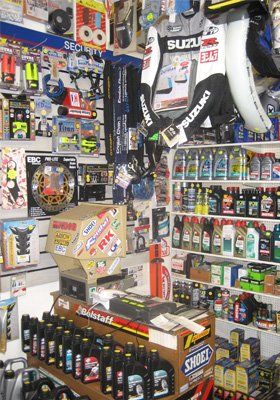Understanding Bike Gears: Exactly How to Enhance Your Riding Experience
In the realm of motorcycling, grasping the art of gear manipulation is important for boosting your riding efficiency. Effectively recognizing and utilizing bike equipments can significantly influence gas, velocity, and control efficiency, changing an average adventure into a smooth, exciting journey.
Comprehending Equipment Mechanics
How do the complexities of gear technicians influence motorbike efficiency? At the core of motorcycle characteristics, equipment auto mechanics play a critical role in converting engine power right into movement, inevitably determining speed and control. Gears, meticulously crafted elements, permit cyclists to enhance torque and rate, making certain a smooth change with different surfaces and velocities. The gear ratios, meticulously designed, determine the partnership in between engine revolutions and wheel turns, affecting velocity and fuel efficiency.
Comprehending equipment technicians begins with recognizing the relevance of the gearbox, which houses several gears of differing dimensions. These equipments interact via a process recognized as meshing, where teeth of different gears engage to transfer power. The accuracy of this interaction is crucial; any type of misalignment or damages can lead to inefficient power transfer, preventing performance. In addition, the plan and size of gears affect the motorbike's capacity to handle different loads and rates.
Furthermore, the idea of equipment moving is indispensable to taking full advantage of efficiency. Timely and smooth shifts ensure that the engine operates within its optimal power band, avoiding unneeded stress and improving longevity (mx gear nz). By understanding these mechanical complexities, bikers can attain an unified blend of control, performance, and power, boosting their riding experience
Timing Your Shifts
Change timing mastery is crucial for maximizing bike performance and improving the riding experience. Correctly timed changes make sure that the engine runs within its ideal power band, which is critical for preserving control, attaining smooth acceleration, and guaranteeing the longevity of the motorcycle. Bikers should develop an user-friendly sense of when to move gears, which includes comprehending the relationship in between engine transformations per min (RPM) and rate.
To understand shift timing, pay close interest to the engine's sound and feel, as these provide crucial clues about when to transform gears. The optimal shift factor typically occurs when the engine comes close to the top variety of its power band without getting to the redline. Shifting prematurely can lead to a lack of power, while changing too late might cause unneeded engine strain
In addition, road problems and riding design influence shift timing. As an example, in metropolitan settings, smoother and more regular changes may be needed to browse traffic successfully. On the other hand, throughout highway riding, fewer changes at greater rates can be better. Exercising in diverse atmospheres will boost your ability to time shifts exactly, inevitably raising your riding experience to a specialist level.
Enhancing Fuel Efficiency
While grasping bike equipments is vital for performance, improving fuel performance is similarly important for both environmental and financial factors. Ideal fuel consumption not only lowers operational prices yet also reduces the eco-friendly footprint of riding. To achieve this, one must comprehend the detailed relationship in between equipment option and engine performance.
Riding in a greater gear at reduced rates can lead to engine lugging, which motorcycle products is detrimental to both fuel economy and engine health and wellness. On the other hand, riding in reduced equipments at high rates results in unnecessary gas intake.
In addition, normal upkeep plays an essential role in fuel performance. Ensuring that the motorbike is well-tuned, with tidy air filters and correctly blew up tires, can decrease and boost aerodynamics gas waste. Moreover, adopting a riding design that welcomes gradual acceleration and smooth slowdown can contribute to far better gas economic situation.

Methods for Smooth Transitions
Achieving smooth equipment changes is fundamental to improving the riding experience and making sure the long life of a motorcycle's transmission system. Correct gear moving not just contributes to a seamless experience however additionally lessens deterioration on the mechanical parts. To master the art of smooth transitions, cyclists must focus on a couple of crucial methods.

Secondly, clutch control plays a pivotal function. Engaging and disengaging the clutch efficiently calls for technique. The clutch lever must be released slowly, enabling a seamless transfer of power from the engine to the wheels without causing a jolt or abrupt motion.

Adapting to Roadway Conditions
Navigating varied roadway problems is an important skill for any motorcyclist intending to maintain control and security. Whether you're riding on wet surfaces, gravel roadways, or navigating sharp turns, your capability to adjust your gear usage and riding motorcycle waterproof suit technique is critical. Recognizing exactly how to change your equipments properly can considerably affect traction and stability, making sure a more secure trip.
On wet roadways, it is a good idea to maintain greater gears to decrease torque and reduce wheel spin. This approach aids maintain grasp on slippery surface areas, permitting smoother velocity and slowdown. On the other hand, when riding on crushed rock or uneven terrain, reduced gears are more effective. Lower gears supply much better control and enable you to react more promptly to unexpected modifications in the road surface area.
Sharp curves demand exact equipment management to balance speed and control. Downshifting prior to going into a contour can aid preserve momentum while making sure the motorcycle continues to be stable throughout the turn. Constant technique in varied problems enhances your capacity to forecast and respond to modifications in roadway appearance and slope.
Final Thought
Grasping motorcycle equipments considerably boosts the riding experience by improving control, gas, and acceleration performance. An extensive understanding of gear mechanics and exact shift timing guarantees the engine runs within its optimum power band, while smooth transitions with reliable clutch and throttle sychronisation increase convenience and performance. Adjusting gear option to numerous road problems, such as using greater equipments on wet surfaces and lower gears on gravel, additional enhances handling and safety. Eventually, these skills raise the general trip.
Recognizing equipment auto mechanics starts with acknowledging the value of the transmission, which houses several gears of varying dimensions. These gears interact through a process recognized as meshing, where teeth of various equipments involve to transmit power (motorcycle parts nz). Gentle modifications to the throttle throughout gear changes can stop jerky motions and maintain a constant riding rate
Whether you're riding on wet surfaces, gravel roadways, or browsing sharp turns, your capacity to adapt your gear usage and riding technique is paramount. Adjusting equipment option to various road problems, such as making use of greater gears on damp surfaces and reduced equipments on gravel, further improves handling and safety.